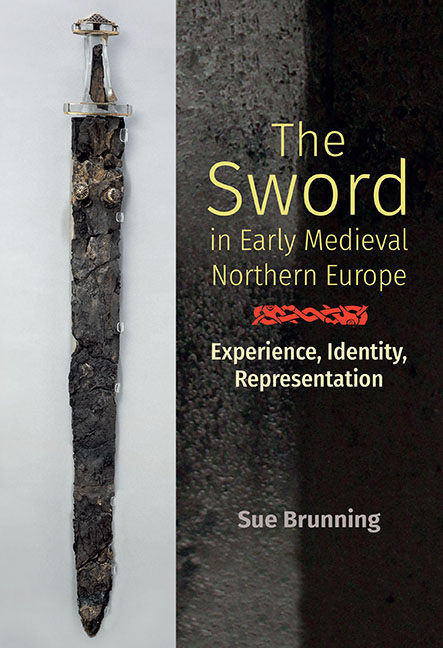Summary
The archaeology of Anglo-Saxon swords conveys the regard in which they were held. They are found primarily in contexts with a marked ritual flavour: bodies of water such as rivers, streams and bogs; and burials, both inhumations and cremations. Individual parts of swords do occur as stray finds, particularly hilt, scabbard and harness fittings that were more prone to loss; but these too played a role in ritualised behaviour, buried singly in graves and, most spectacularly, amassed together in the Staffordshire Hoard. The ways in which swords were treated both during and at the end of their ‘lives’ are of immense value to understanding contemporary perceptions of these weapons. This chapter focuses primarily on swords in funerary contexts, based upon a sample of inhumation burials from sites across England, and parts of Scandinavia for comparison. The sites were selected from existing burial studies that provide a good chronological and geographical spread, together with some newer sites with available records (see Map 1). To some extent the sample was dictated by the distribution of sword burials, which concentrate in certain regions. In England during the furnished burial period (fifth to late seventh centuries), they occur primarily south and east of a line between the River Severn and the Wash, with a concentration in Kent; and after a hiatus they recur in graves during a limited northerly revival of furnished burial in the ninth to tenth centuries, possibly in response to Scandinavian incursions. In Scandinavia, sword burials occur throughout the early medieval period, and in Sweden focus particularly around the easterly Mälar region and on Gotland; in Denmark, on the Baltic island of Bornholm; and in Norway, in various central and southern regions. These chronological and regional idiosyncrasies have a bearing on how the evidence can be analysed and interpreted.
Perceptions of Swords in Early Medieval Archaeology
One aspect of archaeological swords stands out as remarkable: their condition. Many appear to be worn, modified or refurbished, indicating that they had been ‘curated’, or deliberately retained, maintained and kept relevant by their owners. These weapons had presumably ‘lived’ long ‘lives’, generating intricate biographies and social networks, travelling from home to home as heirlooms, gifts, spoils or other forms of transaction. While archaeologists have certainly noted the existence of ‘old’ swords, a cohesive study of the phenomenon has yet to take place.
- Type
- Chapter
- Information
- The Sword in Early Medieval Northern EuropeExperience, Identity, Representation, pp. 59 - 110Publisher: Boydell & BrewerPrint publication year: 2019



